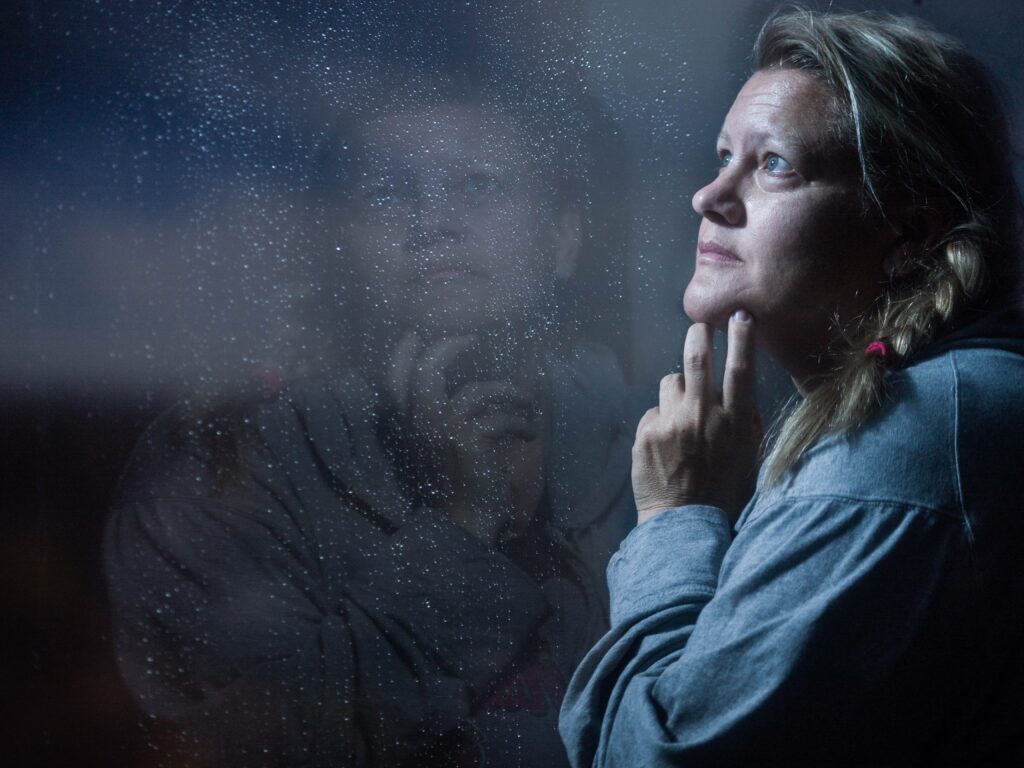
It is recognised in UK policy that the first 1,000 days (from conception to age two) of a child’s life is a critical period. The Marmot review (2010) states that “what happens in these early years, starting in the womb, has lifelong effects” on a person’s health, well-being, and life chances.
There is a vast body of research into adverse childhood experiences (ACEs) and biopsychosocial outcomes throughout development. There has been less research into the potential mechanisms involved in the transmission of the effects of transgenerational trauma. Transgenerational trauma is the psychological and physiological impact of trauma on subsequent generations (e.g. the impact on a child of their mother having experienced childhood maltreatment).
There is a need to understand the impact of transgenerational trauma to better understand how to support vulnerable families. Although the government recently pledged £492 million to early help services, this follows a decade of underinvestment. Building the evidence base around child maltreatment in the UK is therefore essential to present to future policy-makers. Focusing on mothers who had been maltreated as children themselves (maternal childhood maltreatment), Souch and colleagues (2022) conducted a systematic review of this on perinatal outcomes.

Since early intervention has been recognised as key, it is important to ask the question: how can we support vulnerable families in the critical years of a child’s life?
Methods
Souch and colleagues (2022) conducted searches for journal articles that looked at an association between exposure to maternal childhood maltreatment and adverse perinatal outcomes. Specifically, the four following adverse perinatal outcomes were searched for:
- Pregnancy and obstetrics (e.g., miscarriages, birth weight, parental anxiety)
- Maternal mental health (e.g., depression, suicidal ideation, emotion regulation)
- Infant outcomes (e.g., infant emotional processing, infant cognitive, infant physical development)
- The quality of the caregiving environment (e.g., mother-infant relationship quality, child abuse potential, maternal emotional availability).
The authors followed PRISMA guidelines and searched eight databases. Two reviewers independently screened full texts and assessed data quality. The reviewers also examined the reference lists of included studies and contacted the first authors of included studies to identify unpublished and in-press studies. Data were extracted and tabulated, and quality was assessed with the Newcastle-Ottawa Quality Assessment Scale (Wells et al., 2017), which examines the selection of the study groups; the comparability of the groups; and assessment of the outcome.
Results
The review included 49 studies in total. Over 50% of the included studies were conducted in the USA. The total number of women included in this review was nearly 20,000, with roughly a quarter having experienced childhood maltreatment growing up. About 40% of studies conducted assessments of maternal childhood maltreatment and outcomes during pregnancy, and the remainder carried out assessments after birth. Maternal childhood maltreatment was measured in a variety of self-report questionnaires. Quality ratings for the included studies are presented individually in a table and are not discussed further.
The review found that maternal childhood maltreatment was associated with the following adverse perinatal outcomes:
- Alterations in infants’ emotional processing
- Parental child abuse potential
- Maternal emotional availability
- Maternal impulsiveness and risk-taking
- Suicidal ideation during the perinatal period
- Maternal emotion regulation difficulties.
Through analysis of the included studies, the authors found that maternal childhood maltreatment was associated with pre-pregnancy psychopathology, socioeconomic status, and substance use (all of which are factors that have been previously identified as related to adverse perinatal outcomes). The review assimilates the evidence within each subtype of adverse outcome through narrative synthesis.
Only a few studies investigated perinatal outcomes by maternal childhood maltreatment sub-type. Within the studies that measured this, emotional and sexual childhood maltreatment were the most consistent predictors of adverse perinatal outcomes.
Looking at the included studies together, several psychosocial factors were identified as covariates. These included: maternal alcohol use, substance use, age, education, smoking and ethnicity.

This review found that maternal childhood maltreatment is associated with a wide range of adverse perinatal outcomes including the potential for parental child abuse.
Conclusions
The authors concluded that maternal childhood maltreatment was associated with several negative outcomes for mothers and their offspring. The authors also found that maternal childhood maltreatment was associated with several factors that have previously been identified as being related to adverse perinatal outcomes. The review assimilates processes outlined in the included studies that could account for the relationship between maternal childhood maltreatment and negative perinatal outcomes.

The impact of maternal childhood maltreatment on perinatal outcomes is situated within a bigger picture of adversity and (potentially) deprivation.
Strengths and limitations
In terms of methodological strengths, the authors followed PRISMA guidelines meaning that the review followed an evidence-based minimum set of items in reporting. The authors searched eight databases and screened the reference lists of all eligible papers, so it is likely the search was thorough and retrieved all eligible journal articles. The review included nearly 50 papers which is a large number for a review of this kind, and the authors have nicely synthesised the existing evidence on maternal childhood maltreatment and adverse perinatal outcomes using narrative synthesis, which was appropriate instead of a meta-analysis due to the generally small number of studies within each subtype of outcome. Although the authors used a quality rating scale, the results of this were not discussed in relation to the papers included in the review.
The review’s main methodological difficulty, which is noted by the authors, is that the reporting of maternal childhood maltreatment was all through self-report and that different measures are used in different studies (12 different measures within the 49 studies). There is little information, therefore, about the type, duration and timing of the maltreatment experienced by the mothers. It is likely that different experiences would lead to different complications in the perinatal period.
In terms of ideology, in my opinion, this review takes a reductionist point of view on the complex interaction of a child with their environment and their outcomes. Maternal childhood maltreatment is just one factor within the diathesis-stress model that can impact perinatal outcomes. For example, it is important to note that children are more likely to experience adverse experiences if their parents were also subject to abuse and trauma in childhood (WAVE Trust). I understand the need for the review to be on a specific factor for it to be feasible, however, I think the background and conclusions in this review could take a more biopsychosocial stance instead of focussing on biological mechanisms. For example, the authors write that they identified pre- and post-natal processes associated with maternal childhood maltreatment and write that these processes can affect the “maternal programming process” (St-Cyr et al., 2017). St-Cyr and colleague’s (2017) paper is a study on mice that refers to this process in fish, rats and mice. It, therefore, seems a bit of a jump to conclude this.

This review suffers from a lack of detail regarding the type, duration and timing of the maltreatment experienced by the mothers. It is likely that different experiences may lead to different complications in the perinatal period.
Implications for practice
The review goes on to try to synthesise potential biological mechanisms involved in leading to the adverse outcomes of childhood maternal maltreatment (e.g. genetic factors, hormone changes), despite the small number of included studies that report on these mechanisms. The authors also summarise psychosocial mediating mechanisms (e.g. pre-pregnancy functioning) discussed in the included studies. The Early Intervention Foundation argues that it is important not to create a narrative where all opportunities to support child development are lost at the end of infancy since development continues throughout childhood and into adolescence. To give every child the best start in life, intervention must begin before conception and continue throughout childhood.
Population-level screening for parental childhood maltreatment could be a tool to identify families who might be in need of support to reduce the risk of adverse outcomes in children. This could also be useful in terms of safeguarding since research has found that parents with a history of childhood maltreatment (particularly emotional or physical abuse) had a higher risk of abusing their own children (Bert et al., 2009), as well as higher levels of anger, and more violent physical discipline toward infants (Altemeier et al., 1986).
This paper focussed on mothers and did not consider the systems around infants, and in particular did not mention the role of fathers. Future research on the impact of fathers who have experienced childhood maltreatment could be interesting to develop a broader understanding of the impacts of maltreatment on parenting.

Population-level screening for parental childhood maltreatment could be a tool to identify families who might be in need of support and as a safeguarding tool.
Statement of interests
None.
Links
Primary paper
Souch, A. J., Jones, I. R., Shelton, K. H., & Waters, C. S. (2022). Maternal childhood maltreatment and perinatal outcomes: A systematic review (PDF). Journal of Affective Disorders.
Other references
Altemeier, W. A., O’Connor, S., Sherrod, K. B., Tucker, D., & Vietze, P. (1986). Outcome of abuse during childhood among pregnant low income women. Child abuse & neglect, 10(3), 319-330.
Bert, S. C., Guner, B. M., Lanzi, R. G., & Centersfor Preventionof Child Neglect. (2009). The influence of maternal history of abuse on parenting knowledge and behavior. Family relations, 58(2), 176-187.
Drake, B., & Jonson-Reid, M. (2014). Poverty and child maltreatment. In Handbook of child maltreatment (pp. 131-148). Springer, Dordrecht.
St-Cyr, S., Abuaish, S., Sivanathan, S., & McGowan, P. O. (2017). Maternal programming of sex-specific responses to predator odor stress in adult rats. Hormones and behavior, 94, 1-12.
Strategic Review of Health Inequalities in England post-2010. (2010). Fair society, healthier lives: The Marmot review.
The best start for life: a vision for the 1001 critical days. Department of Health and Social Care. March 2021.
WAVE Trust (2014) A preventive and integrated approach to early child development: What’s Missing? And Next Steps, p4,
Wells, G., Shea, B., O’connell, D., Peterson, J., Welch, V., Losos, M., & Tugwell, P. (2017). The Newcastle-Ottawa Quality Assessment Scale (NOS) for assessing the quality of nonrandomized studies in meta-analyses. Clin Epidemiol [Internet], 2017, 1-2.
Photo credits
- Photo by Tamara Bellis on Unsplash
- Photo by Susana Coutinho on Unsplash
- Photo by Susan Wilkinson on Unsplash
- Photo by Nick Fewings on Unsplash
- Photo by Cheron James on Unsplash
- Photo by Markus Winkler on Unsplash
